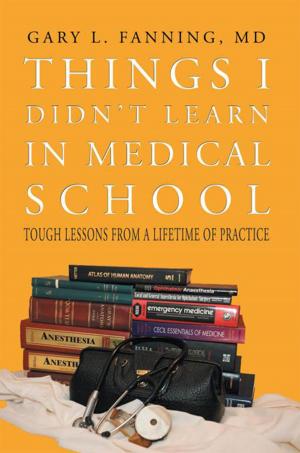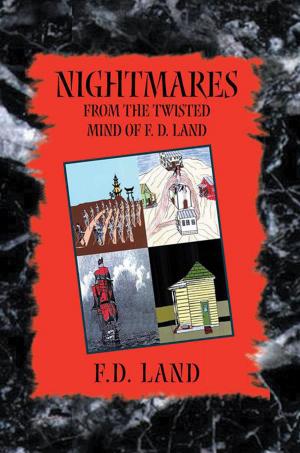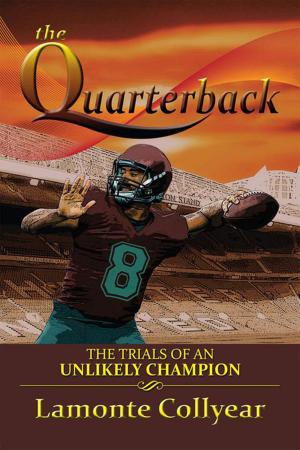| Author: | Edgardo G. Calansingin | ISBN: | 9781469189420 |
| Publisher: | Xlibris US | Publication: | April 2, 2012 |
| Imprint: | Xlibris US | Language: | English |
| Author: | Edgardo G. Calansingin |
| ISBN: | 9781469189420 |
| Publisher: | Xlibris US |
| Publication: | April 2, 2012 |
| Imprint: | Xlibris US |
| Language: | English |
The Author began his story with his birth in 1931 in a small town of Murcia, Province of Negros Occidental and Negros Islands in an underdeveloped country of the Philippines in the Far East. Cresencio L. Calansingin, his father secured an employment as one of the swimming pool cleaners and Angelina G. Calansingin, his mother moved to the Mambucal Spring Summer Resort at the Provincial Government Forest Reservation area at the mountainside of Canlaon Mountain of Negros Islands. The couple transferred down to the Bago River Ferry Mambucal Bridge, two years later, when both secured employment as Toll Collectors of the Bridge. Bago River was an isolated location, six kilometers east to the Mambucal Spring Summer Resort and eight kilometers west to the town of Murcia. The Author at a very tender age had the river for a playground. He contracted ear infections because of daily diving into the water and swimming on the river. The infection spread and hardened his sinus cavities causing stammering of speech. Ignorance, neglect, and distances to the Provincial Hospital 34 kilometers west to Bacolod City, the capital of the Province aggravated his medical condition. The Authors father died when he was 6 years old and his mother remarried a year later. Then World War II broke out and the Authors paternal grandparents decided they took the orphaned boy under their custody in as much as the widowed mother married a widower who had two children by his previous marriage. The Author at age 10 years old, worked with his grandfather, aged 56 years old. They cleared a two-hectare piece of land of abandoned sugarcanes, plowed, and harrowed the soil using plows or harrows pulled by the carabaos while each walked after each work animal pulling the farm implement. The Author stumbled many times after the plow handle every time the plowshare hit the resisting sugarcane roots that embedded deeply and securely to the earth. There were hundreds of rows in a hectare and hundreds of roots in a row and he stumbled hundreds of times while his grandfather looked after his welfare and waited patiently for his recovery and they went on plowing the fields. Plowing and harrowing the fields were two aspects of rice farming, they sat, knelt, and pulled away every weed from every root of the plants that competed against the plants for nutrients from the soil. They were hard labor but they needed the rice from the plants for subsistence. The Author discovered that chewing sugarcanes the whole day or eating root crops such as camote (sweet potato), cassava, and corn did not supply the required nutrition. He needed the staple food of rice and fish for daily existence. Food, shelter, and clothing were his grandparents preoccupation during wartime. They planted rice, camote, cassava, corn, beans, and mongo according to the months (season). They raised fowls for supplemental food. His grandfather was a skilled carpenter and they built a hut made of cogon grasses and bamboo tree materials. His grandmother assembled pieces of clothes and sewed them for his pants and shirt because he refused wearing clothes improvised out of empty sugar sacks. A group of marauders swooped down late one night and carted all their foodstuff, clothes, and they started all over again. His grandmother saw to it that they ate rice once a day while root crops made up for breakfast and dinner. They went half-hungry every day for months until they produced again the much-needed staple food. Three long years of World War II was not a dream. It was waking up every morning, heading to the carabao enclosure, and taking the work animals to labor or to pastures whether under the heat of the dry season sun or under the downpour of the rainy days. Work animals need food too and his daily tasks included riding them to pastures. He grazed the carabaos to the tall abandoned sugarcanes for the animals loved chewing the offshoot sugarcane leaves, then he disembarked suddenly and went after the birds n
The Author began his story with his birth in 1931 in a small town of Murcia, Province of Negros Occidental and Negros Islands in an underdeveloped country of the Philippines in the Far East. Cresencio L. Calansingin, his father secured an employment as one of the swimming pool cleaners and Angelina G. Calansingin, his mother moved to the Mambucal Spring Summer Resort at the Provincial Government Forest Reservation area at the mountainside of Canlaon Mountain of Negros Islands. The couple transferred down to the Bago River Ferry Mambucal Bridge, two years later, when both secured employment as Toll Collectors of the Bridge. Bago River was an isolated location, six kilometers east to the Mambucal Spring Summer Resort and eight kilometers west to the town of Murcia. The Author at a very tender age had the river for a playground. He contracted ear infections because of daily diving into the water and swimming on the river. The infection spread and hardened his sinus cavities causing stammering of speech. Ignorance, neglect, and distances to the Provincial Hospital 34 kilometers west to Bacolod City, the capital of the Province aggravated his medical condition. The Authors father died when he was 6 years old and his mother remarried a year later. Then World War II broke out and the Authors paternal grandparents decided they took the orphaned boy under their custody in as much as the widowed mother married a widower who had two children by his previous marriage. The Author at age 10 years old, worked with his grandfather, aged 56 years old. They cleared a two-hectare piece of land of abandoned sugarcanes, plowed, and harrowed the soil using plows or harrows pulled by the carabaos while each walked after each work animal pulling the farm implement. The Author stumbled many times after the plow handle every time the plowshare hit the resisting sugarcane roots that embedded deeply and securely to the earth. There were hundreds of rows in a hectare and hundreds of roots in a row and he stumbled hundreds of times while his grandfather looked after his welfare and waited patiently for his recovery and they went on plowing the fields. Plowing and harrowing the fields were two aspects of rice farming, they sat, knelt, and pulled away every weed from every root of the plants that competed against the plants for nutrients from the soil. They were hard labor but they needed the rice from the plants for subsistence. The Author discovered that chewing sugarcanes the whole day or eating root crops such as camote (sweet potato), cassava, and corn did not supply the required nutrition. He needed the staple food of rice and fish for daily existence. Food, shelter, and clothing were his grandparents preoccupation during wartime. They planted rice, camote, cassava, corn, beans, and mongo according to the months (season). They raised fowls for supplemental food. His grandfather was a skilled carpenter and they built a hut made of cogon grasses and bamboo tree materials. His grandmother assembled pieces of clothes and sewed them for his pants and shirt because he refused wearing clothes improvised out of empty sugar sacks. A group of marauders swooped down late one night and carted all their foodstuff, clothes, and they started all over again. His grandmother saw to it that they ate rice once a day while root crops made up for breakfast and dinner. They went half-hungry every day for months until they produced again the much-needed staple food. Three long years of World War II was not a dream. It was waking up every morning, heading to the carabao enclosure, and taking the work animals to labor or to pastures whether under the heat of the dry season sun or under the downpour of the rainy days. Work animals need food too and his daily tasks included riding them to pastures. He grazed the carabaos to the tall abandoned sugarcanes for the animals loved chewing the offshoot sugarcane leaves, then he disembarked suddenly and went after the birds n















